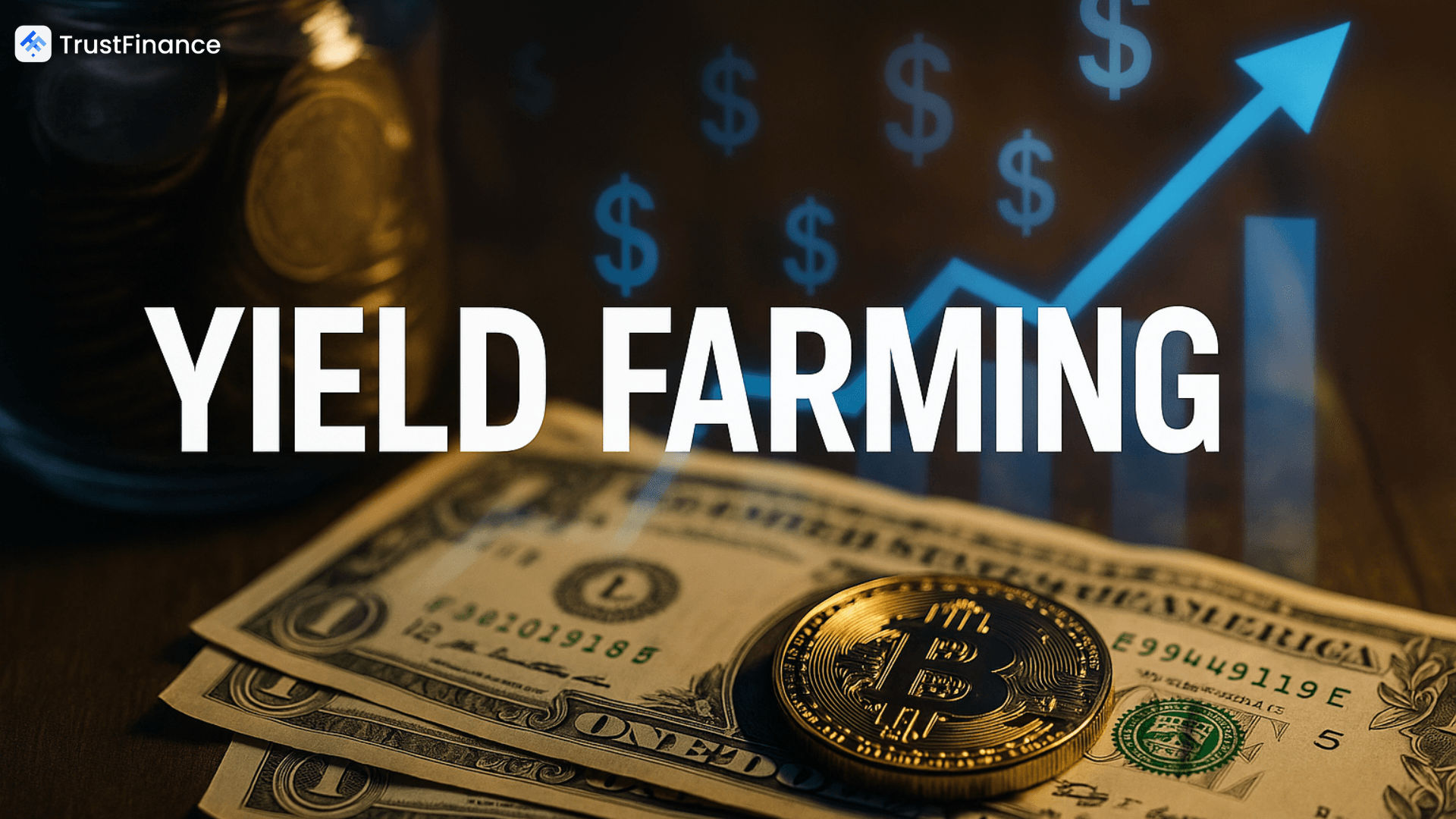Yield farming is one of the most intriguing innovations in the decentralized finance space, commonly referred to as DeFi. You may have heard the term “crypto farming” or “making your coins work for you,” but what does it actually mean? How does it work? And can it really generate passive income?
This article offers a structured overview of yield farming, from core definitions to practical steps to get started, and highlights the benefits, risks, and real-world examples to help you make an informed decision.
What is yield farming?
Yield farming is the process of earning rewards by depositing or locking your crypto assets into a decentralized finance protocol. These protocols use your crypto to provide liquidity or enable borrowing and lending functions. In return, you receive rewards such as interest, transaction fees, or governance tokens.
In simple terms, it’s similar to depositing money into a traditional savings account — but instead of a bank managing your funds, it’s a decentralized protocol powered by smart contracts, which are automated codes that execute transactions without intermediaries.
How Yield Farming Works
At the core of yield farming are liquidity pools. These are pools of crypto funds stored in a smart contract, which other users can trade or borrow from. You become a liquidity provider when you deposit crypto into these pools. In exchange, you receive tokens that represent your share of the pool.
You may then earn fees from traders who use the pool, interest from borrowers, or additional tokens as an incentive. Some platforms also allow you to take your liquidity tokens and stake them elsewhere to earn even more rewards — this is often called compounding or layered yield farming.
Yields are usually displayed as APY (Annual Percentage Yield), and they fluctuate depending on supply, demand, and market activity.
Why Is Yield Farming So Popular?
Since 2020, yield farming has become a major trend in crypto for several compelling reasons:
1. Passive Income Potential
Investors can earn rewards without having to actively trade. Simply deposit your crypto and let it generate returns over time.
2. Higher Returns Than Traditional Finance
Yield farming can offer returns much higher than interest rates from banks or traditional financial products, especially during periods of high demand.
3. Contribution to the DeFi Ecosystem
By providing liquidity, you help decentralized platforms function efficiently, allowing others to trade or borrow crypto seamlessly.
4. Strategic Opportunities
Advanced users can optimize their returns by moving funds across platforms, stacking yields, or taking advantage of short-term reward programs.
Real-World Examples of Yield Farming
There are many DeFi platforms where you can engage in yield farming. Each offers different reward mechanisms, supported assets, and risk levels. Here are a few popular examples:
Uniswap
One of the most well-known decentralized exchanges. Users can deposit token pairs like ETH and USDC into liquidity pools and earn fees from trading activity.
PancakeSwap
Built on the Binance Smart Chain, PancakeSwap is beginner-friendly with lower transaction fees and a wide variety of farming options.
Curve Finance
Specializes in stablecoin trading pairs such as USDC, DAI, and USDT. Its design minimizes volatility and offers steady yields for those seeking more stability.
Risks of Yield Farming
While yield farming can be lucrative, it’s not without risks. Understanding these risks is essential before participating.
Impermanent Loss
Occurs when the price of your deposited assets changes significantly, potentially resulting in lower returns compared to just holding the tokens in your wallet.
Smart Contract Vulnerabilities
Since DeFi runs on automated code, bugs or exploits in the smart contract can lead to loss of funds.
Token Price Volatility
The tokens you earn as rewards might drop in value quickly, reducing your overall yield.
Exit Scams and Fraud
Some unaudited or lesser-known projects may disappear after collecting users’ funds — this is often called a “rug pull.”
How to Start Yield Farming Safely
Do Your Research
Understand the fundamentals of DeFi and thoroughly vet any platform before depositing funds. Check if it’s audited and backed by a reputable development team.
Start Small
Never invest more than you can afford to lose. Test the waters with a small amount before scaling up.
Choose Assets You Understand
Stick to tokens you know and trust. Be wary of new or unknown tokens offering extremely high returns.
Stay Updated
Monitor platform announcements, community feedback, and market trends. Changes in rewards, fees, or smart contract upgrades may impact your returns.
Conclusion
Yield farming allows crypto investors to earn passive income by contributing liquidity to decentralized protocols. It offers a powerful way to make your assets work for you while supporting the broader DeFi ecosystem.
However, with the potential for high rewards comes significant risk. From price volatility to technical vulnerabilities, yield farming should be approached with careful research, realistic expectations, and strategic risk management.
For those new to the space, start slow, educate yourself, and experiment with reputable platforms. With the right approach, yield farming can become a valuable component of your long-term crypto investment strategy.
Source
https://merkle.capital/articles/what-is-yield-farming
https://www.moneybuffalo.in.th/vocabulary/what-is-yield-farming
https://www.coinbase.com/learn/your-crypto/what-is-yield-farming-and-how-does-it-work

